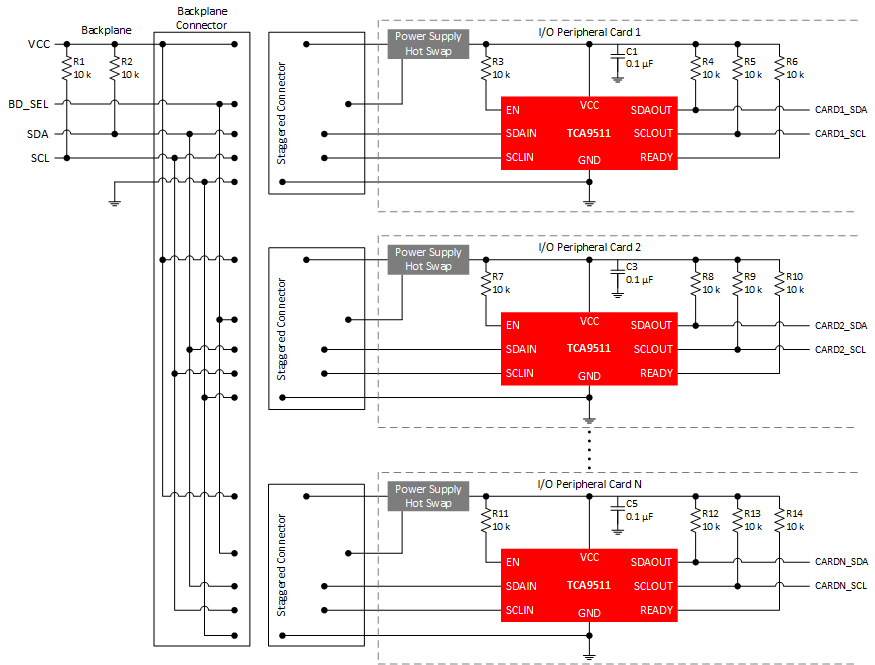ZHCSKD1C October 2019 – January 2021 TCA9511A
PRODUCTION DATA
- 1 特性
- 2 应用
- 3 说明
- 4 Revision History
- 5 Pin Configuration and Functions
- 6 Specifications
- 7 Parameter Measurement Information
- 8 Detailed Description
- 9 Application Information Disclaimer
- 10Power Supply Recommendations
- 11Layout
- 12Device and Documentation Support
- 13Mechanical, Packaging, and Orderable Information
9.3 Typical Application on a Backplane
As shown in Figure 9-6, the TCA9511A is used in a backplane connection. The TCA9511A is placed on the I/O peripheral card and connects the I2C devices on the card to the backplane safely upon a hot insertion event. Note that if the I/O cards were plugged directly into the backplane, all of the backplane and card capacitances would add directly together, making rise time and fall time requirements difficult to meet. Placing a bus buffer on the edge of each card; however, isolates the card capacitance from the backplane. For a given I/O card, the TCA9511A drives the capacitance of everything on the card and the backplane must drive only the capacitance of the bus buffer, which is less than 10 pF, the connector, trace, and all additional cards on the backplane.
 Figure 9-6 Backplane
Application Schematic
Figure 9-6 Backplane
Application Schematic